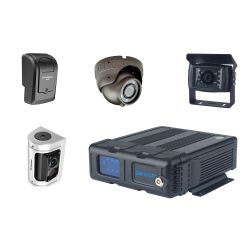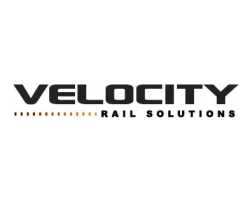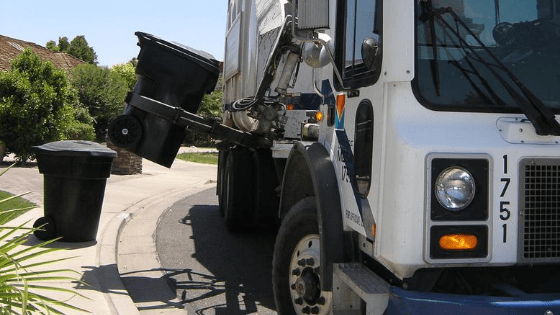Changing Safety Concerns In Fleets: How Telematics Solutions Factor In
October 5, 2020
Fleet safety is always the top priority and responsibility for any fleet manager. With the COVID-19 pandemic still in full force, it’s not surprising to hear that the COVID-19 pandemic has created significant uncertainty and disruptions to many businesses’ fleet operations. More specifically changing safety concerns.
In a pre-pandemic world, drivers were already expected to fulfill time-consuming work orders, which leave little in the margin of errors. This anxiety is amplified in times like this, as workloads become even more onerous and deadlines become even tighter due to the changing demands. Such stress can have a series of impacts on drivers’ driving performance and behaviours.
During this challenging time, fleet managers are responsible for supporting drivers in various ways and protecting overall fleet safety. It’s important for fleet managers to constantly remind drivers never to let their “safety first” guard down during the daily operations. As one single accident can cause immeasurable loss and harm to your businesses and assets, this is something that cannot be overlooked and underemphasized.
But how do fleet managers keep safety a top priority even if they are noticing more risky or dangerous driving behaviours? They must plan and develop a comprehensive safety framework and long-term strategy that addresses and mitigates fleet safety issues, concerns, and potential risks. A multi-pronged strategic approach focused on organizational changes, technological advancement, and drivers’ mental support could elevate businesses’ fleet safety programs to a new height.
Telematics Technologies That Address Safety Concerns
Equipping fleet vehicles with the appropriate telematics technology that automatically collects and analyzes driving data is critical to preventing new safety concerns. Among the many available technologies available, we will discuss various solutions that focus on driver behaviour data and preventing actions that have been noted to increase risk by using artificial intelligence algorithms, collision detection and more to eliminate new driving risks that developed from the pandemic.
Dispatching Solutions That Address Drivers’ Mental Health Matters
There has never been a more important time than right now to talk about drivers’ mental health. Keeping your drivers happy and stress-free is an essential in ensuring that they will practice good driving habits and strictly follow safety protocols and rules. The pandemic has caused a rapid uptick in freight transportation activities, and drivers are the backbone of cargo movement.
However, many businesses experienced a shortage of drivers due to increasing drivers’ absences and sick leaves during the pandemic, forcing the rest of the on-duty drivers to take additional tasks. Many drivers faced the growing pressure of completing all the work within a shift, prompting them to commit dangerous driving behaviours such as speeding to meet the deadlines – An obvious safety concern.
Fleet managers should always prioritize employees’ health and safety and provide additional flexibility to drivers during the current difficult time. Factoring in more rest time and breaks into drivers’ schedules can provide relief to drivers, so they do not have to rush on roads to get the work done within a tight timeframe. In this case, fleet managers need to rely telematic technology. Specifically fleet dispatching solution that can automatically help them manage work orders and assign tasks to drivers. In most cases, fleet managers will receive real-time work order updates and gain detailed insights into driver status and trip information.
Combined with industry-leading fleet tracking devices which collects telematics data, GPS information with the capability of tracking vehicle speed and check HOS (Hours of service) compliance – fleet managers can identify if there is any safety risk caused by heavy workloads. Adjustments can be made to drivers’ schedules from the fleet manager end to reduce drivers’ assigned tasks or add more rest time.
Stopping Distracted Driving
Distracted driving is one of the leading causes of collisions and road accidents. Cell phones are a top distraction and safety concern because many drivers use them for extended periods of the day. Drivers might be taking calls or looking at messages during driving to connect with family members or customers.
During the pandemic, many family members of drivers have grown increasingly worried about drivers’ health and safety; thus, there is a sharp increase in the number of family call distractions during driving. To mitigate the risk, fleet managers can reach out to family members of drivers and educate them about the danger of distracted driving and let them know that their actions may put their loved ones at risk.
Fleet managers can also offer reassurances to drivers’ family members that companies will take good care of drivers and ensure their safety won’t be compromised. Additionally, investing in a driver distraction camera setup could further secure drivers’ safety and businesses’ assets.
Equipped with cutting-edge facial recognition telematics technology, driver distraction cameras can provide audible alerts to warn drivers if it detects driver distraction, and it will automatically trigger video recording to document the process for later review purposes. It’s the ultimate preventive tool in stopping distracted driving and keeping your employees safe.
Creating a Fleet Safety Culture
Maintaining a healthy, safe, and positive workplace safety culture can increase drivers’ safety awareness and consciousness. Positioning safety as a core value in the business operation will strongly influence drivers’ actions and behaviours. Three underlying pillars are necessary to form a strong safety culture within the businesses. Improving communications and developing real relationships with drivers can help fleet managers understand drivers’ pain points or problems encountered during driving.
It’s also one way for fleet managers to identify risks and safety concerns hidden within the fleet operations and address them with solutions or changes. Organizing roundtable discussions or virtual video meetings routinely between all drivers and fleet managers provides drivers with opportunities to share their observations from their daily driving experiences and let fleet managers collect, analyze, and respond to drivers’ concerns. These discussions also serve as a platform for fleet managers to offer moral and mental support to drivers.
The pandemic could be a turbulent period that may impact drivers’ mental states and workers’ morale. During this difficult period, fleet managers need to offer more sympathy, understanding, and reassurance to drivers. Giving drivers more flexibility could have a meaningful impact on improving drivers’ satisfaction and well-being.
The communication has always meant to be a two-way process that requires a collective effort and contribution from both drivers and fleet managers. Through exchanges of ideas and feedback between drivers and managers, businesses can establish and maintain a robust safety culture within its fleet.
The second pillar is about advancing and improving the driver training process. Training should not just mean initial company training at the beginning of a driver’s career, but it’s more about continuously and frequently retraining your drivers about safety. Routine follow-up training is a critical element in refreshing drivers on what they learnt in the past, introducing new safety-related techniques and skills, and identifying unsafe driving habits and behaviours.
One of the key parts of the training process is that the fleet manager works with driver one-on-one to review drivers’ past driving footages, identify any problems, and develop improvement plans. This only works when the fleet manager is empowered with a lot of data. In order to get necessary data, a telematics solution must be in place to capture drivers’ historical trip data and driving footages.
The ZenduCAM dash camera is an intelligent camera solution that provides high-resolution live streaming of vehicle operation, allowing fleet managers to monitor fleet activities in real-time. The playback feature and unlimited uploads to the Cloud grant fleet managers the freedom to pullout footage and review them with drivers anytime.
To make it even better, all rule violation such as harsh driving events, collisions, lane departures, speeding are all captured and recorded in the system. Meaning fleet managers will gain not only valuable resources to assess drivers’ performance but also critical evidence pieces when determining faults and liability when drivers get involved in accidents. With these footages’ assistance, fleet managers can develop appropriate customized training plans for each driver, which will help them practice necessary safety skills. Further addressing safety concerns. The fleet managers can come back and review the new footages again after the execution to evaluate the effectiveness of training plans.
The last important pillar focuses on rewarding drivers with good driving habits and motivating the rest of them to follow suit. ZenScore is a reliable tool for the fleet manager to evaluate individual drivers’ overall performance and determine top behaved drivers within the fleet.
ZenScore assigns a safety score to each driver based on the assessment of driver’s driving behaviour, such as the numbers of speeding, harsh driving, fault, HOS (Hours of service) violation, allowing the fleet manager to identify well-performed drivers and high-risk drivers quickly. Rewards, such as monetary bonuses, extra rest time and breaks, could be sent out to drivers who own high safety scores, and additional training could be provided to the ones who get low safety scores. The reward system backed up by an advanced driver scoring system can indeed encourage more drivers to commit to safer driving habits.
Maintaining Maintenance Focus
There are other aspects of fleet management that play equally important roles in supporting safe operations. Vehicle maintenance is an essential service in ensuring the proper functioning of the vehicles, reducing costly unexpected breakdowns, and extending the life of the vehicles. It’s the foundation of any fleet operations and could be decisive to the fleet operational efficiency and driver’s safety. Businesses and fleet managers need preventative tools that help them identify vehicle problems before it happens.
Here is where smart sensors and automated vehicle diagnostic tools which can make a big difference in alerting fleet managers and drivers of vehicle faults and issues early. The tire pressure monitoring system provides proactive monitoring solutions that give fleet managers and drivers full visibility of tire health. The system will issue an alert and provide insightful reports if a tire performance issue has been detected.
The industry-leading Zendu Maintenance management solution integrates vehicle diagnostics, maintenance reminders, and asset lifecycle assessment features in one platform, giving fleet managers and maintenance teams the total control of all vehicle status and maintenance service status.
Developing Fleet Safety Policies
Designing and implementing a comprehensive, detailed safety plan and protocol within the fleet provides guidelines and standards that all drivers and fleet staff need to comply with. The plan should cover information including health and safety policies, vehicle standard operating procedures, vehicle maintenance and inspection standard operating procedures, training procedures, individuals’ responsibilities, accident reporting procedures, drivers’ safety checklists, and other elements.
Effective standardization of procedures provides drivers and staff with measurable, clear, and safe instructions for completing certain tasks and ease the process of tracking accountability and determining liability when an accident happens.
Managing Your Telematics Data
An advanced cloud-based data storage and management solution is the foundational tool businesses need to build a complete fleet safety management system. Data is an incredibly valuable asset for any business as it provides comprehensive information about fleet operations, vehicle status, and safety measurement.
Having a highly organized cloud database allows fleet managers to retrieve and review data or video footage from historical trips. This is especially convenient when fleet managers encounter a regulatory inspection or road accident where data or visual evidence or proof are required to be presented or verified. Knowing who is at fault in an accident gives fleet managers greater confidence in defending your fleet and drivers.
A combination of hard and soft approaches can completely transform businesses’ safety culture and keep your employees and assets safe. Contact us to speak with an industry-specific consultant if you are looking to address new and ever-changing safety concerns.










